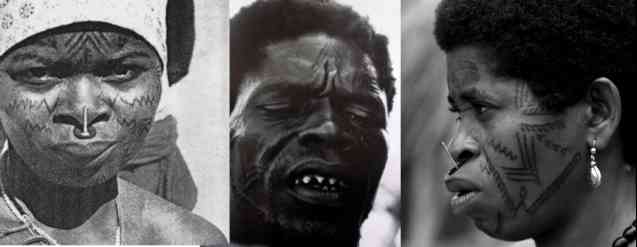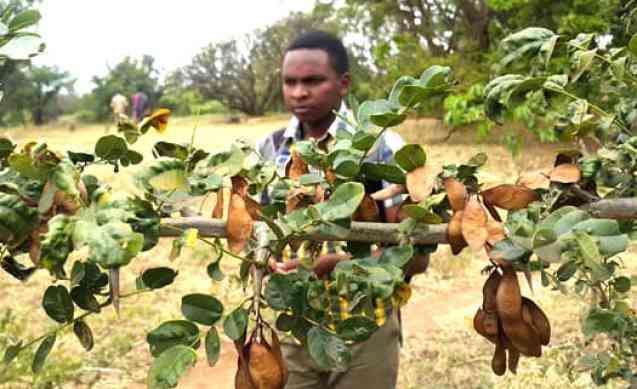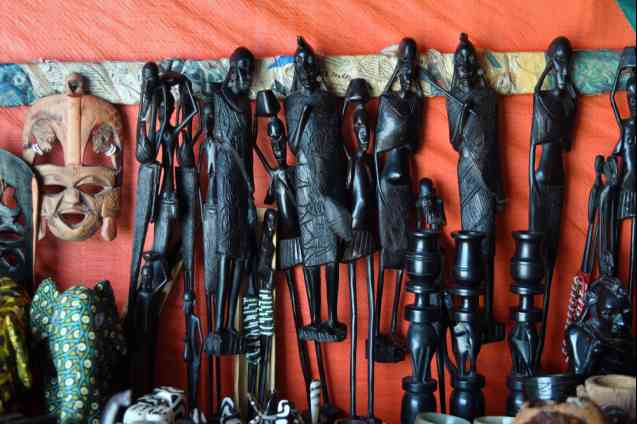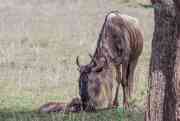African Culture Now: Gain Insight into the Makonde People of Tanzania
Tanzania has a population of around 58 million people. With over 120 distinct ethnic groups who speak more than 100 different languages, it is difficult to speak of Tanzanian culture in the singular. The Makonde people of Tanzania are renowned for their exceptional woodcarving skills and have become synonymous with Tanzanian culture. Their traditional ebony carvings fetch high prices in the art world, but who are the Makonde, and where do they come from?
 Tanzanian Makonde dancers, African culture
Tanzanian Makonde dancers, African culture
Who Are the Makonde People of Tanzania?
Traditionally, the Makonde were matrilineal societies with long-established carving traditions. Carving as art was passed from father to son, and young men learned the carving techniques during initiation ceremonies. Many carvers produced functional utensils, but the more artistically inclined were asked to create ritualistic helmet masks called Mapiko, and figurines for sacred events. Although they were matrilineal societies, carving was traditionally only for men, and their work was kept strictly secret from the women of the tribe.
|
 Makonde people of tanzania scarification
Makonde people of tanzania scarification
Where do these Tanzanian People come from?
The Makonde people of Tanzania originated in northern Mozambique. During the 18th and 19th centuries, they were pushed north and west onto the high Mueda Plateau, on both sides of the Ruvuma River, as they sought to escape the attentions of colonial and Arab slavers. They lived in relative peace in this inaccessible hinterland until the advent of World War I, when the Portuguese made inroads into their territories.
A Brief History of the Makonde Carvers
The value of the Makonde carvers was quickly realized, and while other groups were forced to work for colonial powers to cover taxes, the Makonde were able to generate income through their traditional carvings. Missionaries and colonialists commissioned work of significance and value and these commissions quickly expanded the repertoire of the Makonde carvers. It was common for carvers to set up carving communities to meet demand, and over time the Makonde carvers moved as far as Dar es Salaam to access better markets.
 Tanzanias African blackwood conservation project
Tanzanias African blackwood conservation project
Over time Makonde art changed from a secret art for ritual use into becoming an economic and creative force in mainstream Tanzanian culture. Carvers were issued with artisan licenses which exempt them from forced labor and allowed them to carve full-time. Colonial powers ran profitable export businesses, and the Makonde carvings were introduced to an international market.
Over the next century, their imaginative skills developed three distinctive forms of expression. Binadamu was the depiction of realistic human and animal figures, Ujamaa was an expression of human connectedness and interdependence and Shetani were imaginative carvings depicting their spirit world.
| Tanzanian Culture: Makonde Co-ops |
|---|
|
 Makonde Curios, Tanzania Culture
Makonde Curios, Tanzania Culture
What do the Makonde Carvers Carve?
While traditional Tanzanian carvings included ceremonial masks and utensils, the colonial demand expanded the range of carvings that the Makonde produced. There are three main styles or forms of carving known as Binadamu (Swahili for ‘humankind’), Ujamaa (the tree of life), and Shetani (carvings from the spirit world).
Binadamu Sculptures
The Binadamu sculptures are representations of everyday life. The Portuguese bought and sold mostly animal figures, and figures of African people going about their daily lives, carrying water, tending children, hunting, and farming while missionaries tended to commission more religious themes. This style of carving was carried back to Kenya after World War II, and today can be found in markets around East Africa. In addition to the cultural influence in East Africa, the Makonde art has an international following too.
Ujamaa Sculptures of Tanzania
Popularly known as “Tree of Life” sculptures, Ujamaa is synonymous with the interrelations of family, tribal communities, and larger social entities. Often carved from a single tree trunk, these columns can take up to a year to carve. Intertwined figures show generations building on generations thus seen as the African family tree. The genre speaks about solidarity, mutual support, and relationships. In the ’60s and '70s, Tanzania’s president Nyerere’s Ujamaa Party adopted the form as Tanzania’s national symbol of political unity.
- Roberto Yacobo Sangwani is the Makonde artist attributed with developing the Ujamaa sculptural form.
Shetani Figures
These mesmerizing sculptures offer a glimpse into the spirit world of the Makonde. They depict mythic figures existing in metaphysical realms but are connected to, and hold influence over human actions. Their influence can be either malevolent or benevolent. The Shetani sculptural spirits can represent an emotional state, a spirit of nature, or a devil.
“It comes from dreams. We believe that when we sleep the soul goes out, away from the body. When we awake we can have many pictures in our heads and Shetani is one of the results.” - Shetani sculptor
- The originator of the Shetani style was Samaki Linkakoa
 Makonde carving styles, Binadamu, Ujamaa, and Shetani
Makonde carving styles, Binadamu, Ujamaa, and Shetani
| African Culture in Tanzania: The Makonde People |
|---|
|
What Wood do Tanzanian Carvers Carve?
Dalbergia melanoxylon – African Blackwood or Mapingo
The best and most expensive Makonde carvings are made from African Blackwood. Dalbergia melanoxylon, Mpingo, or African ebony is dense, heavy, hard, and durable. Tanzania’s national tree, Mapingo is one of Africa’s most valuable timbers. Blackwood has been prized for millennia with blackwood furniture from ancient Egypt dating back over 5000 years. The wood is particularly valuable for wind instruments, and parts of violins.
| Tanzania Culture: African Blackwood |
|---|
|
 Mpingo seeds and Tanzania people
Mpingo seeds and Tanzania people
Today, African Blackwood is increasingly rare. The Makonde people of Tanzania do use other wood, which is then burnt, or covered in shoe polish to preserve it. The best Makonde carvers, however, seek out African ebony, and these carvings fetch the highest prices and are much sought after by collectors. The African Blackwood Conservation Project (ABCP) was founded in 1996 in the rural Moshi district of the Kilimanjaro region and seeks to replant Mpingo to ensure that this precious tree remains a viable resource, and continues to contribute to African culture and heritage in Tanzania.
 Harvested mapingo logs, Tanzania
Harvested mapingo logs, Tanzania
Where Can I Buy Makonde Sculptures?
In the heart of Dar es Salaam, you will find the Mwenge Woodcarvers Market. From the road, the market is non-descript and unappealing. Step inside, however, and discover a smorgasbord of curios, artworks, and sculptures. This is no ordinary market, but one formed by the artisans themselves.
This Tanzanian co-op follows the tradition of the Makonde Carvers and is formed by a collective of about 200 carvers. You will find the artisans at the Mwenge Woodworkers Market hard at work creating beautiful pieces for sale. There are many exquisite items found in the various styles of the Makonde Carvers. You can even commission work if you have time. This is a great place to find souvenirs or gifts to commemorate your Tanzania safari.
 Makonde Carvings, Tanzanian culture
Makonde Carvings, Tanzanian culture
The Mwenge Woodcarvers Market has a unique hassle-free atmosphere. While you will be encouraged into the various stalls, there is no pressure to buy. Take your time to look around, chat with the carvers, and get a sense of the prices. Then, circle back to the items that caught your eye. Bargaining is expected, but be respectful, polite, and bring a good-natured sense of humour. These are professional carvers with families to support through this ancient art form that has been passed down through generations.
 Makonde Art Collection in China
Makonde Art Collection in China
| Tanzania Art Museum |
|---|
|
 Mwenge Woodcarvers Marker Dar es Salaam
Mwenge Woodcarvers Marker Dar es Salaam
Famous Tanzania Culture of the Makonde
The Makonde Carvers have traced a unique trajectory through Tanzania’s history. Their art form is a unique expression of Tanzanian culture and aesthetics and continually changes and adapts. While Tanzania is one of the best safari destinations in Africa, finding a Makonde Carving can be an experience in its own right. The intricate and detailed carvings are a testament to the creativity and skill of these Tanzanian people who have chiselled a place for themselves in the art fabric of the world.
Interested in visiting the Mwenge Woodcarvers Market in Dar es Salaam? Contact one of our specialist safari consultants today.
If you liked this post, these trips cover similar ground…
- 7 Day Tanzania Private Safari to Mikumi & Ruaha National Park
- 15 Day Kenya & Tanzania Safari - Cultural & Wildlife Lodge Tour
- 10 Day Tanzania Private Safari to Nyerere, Mikumi, Ruaha & Udzungwa
- 9 Day Tanzania Private Safari to Southern National Parks
- 24 Day Overland Africa Tour: Dar es Salaam to Johannesburg




 On the outskirts of Marloth Nature Reserve, Andrew can be found walking and swimming in the beautiful Langeburg Mountains. He is passionate about animals, birds, reptiles, and plants and loves nothing more than an adventure in nature. An established artist with a master's in English literature, Andrew has traveled far and wide but South Africa still has his heart.
On the outskirts of Marloth Nature Reserve, Andrew can be found walking and swimming in the beautiful Langeburg Mountains. He is passionate about animals, birds, reptiles, and plants and loves nothing more than an adventure in nature. An established artist with a master's in English literature, Andrew has traveled far and wide but South Africa still has his heart.












